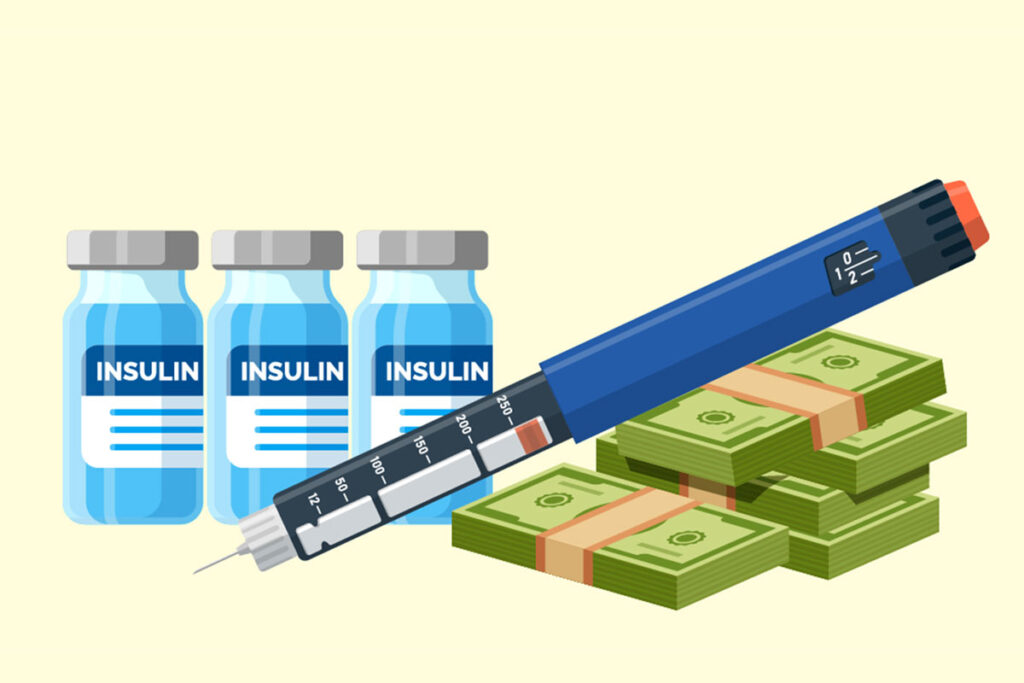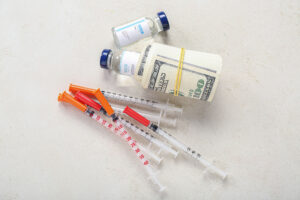The Inflation Reduction Act’s policy capping out-of-pocket costs for insulin to $35 for a month’s supply led to increases in the total number of insulin fills for Medicare beneficiaries, according to a new study from the USC Schaeffer Center for Health Policy & Economics and University of Wisconsin–Madison.
Following the cap’s enactment in January 2023, the number of insulin fills among Medicare Part D enrollees increased from 519,588 to 523,564 per month. In contrast, the number of insulin fills decreased among older adults without Medicare during the same period. The study was published today in the Journal of the American Medical Association.
The amount spent out-of-pocket for insulin has skyrocketed for Medicare enrollees, from $236 million in 2007 to more than $1 billion in 2020. As a result, many patients with diabetes ration the life-saving drug, increasing the risk of poor health outcomes. In January, the Inflation Reduction Act (IRA) capped all Part D beneficiaries’ out-of-pocket costs for insulin at $35 for a month’s supply. The study’s findings suggest the cap is encouraging patients to fill their insulin prescriptions.
“Many Americans are concerned with the cost of insulin because people with diabetes are at great risk of serious health problems, including nerve damage, heart attack and stroke. This new policy has the potential to do two things: save money for people who are taking insulin, and help people afford insulin to begin with,” said study co-author John A. Romley, associate professor at the USC Sol Price School of Public Policy and Alfred E. Mann School of Pharmacy and Pharmaceutical Sciences and a senior fellow at the USC Schaeffer Center.
“Our analysis suggests that this policy meaningfully reduced the number of Medicare beneficiaries who were not filling their insulin because of the cost – which would have potentially put their health at risk,” said lead author Rebecca Myerson, assistant professor of population health sciences at the University of Wisconsin School of Medicine and Public Health and a nonresident senior fellow at the USC Schaeffer Center.
Study analyzed 14 million insulin fills from a national prescription database
To examine the cap’s effectiveness, researchers used data from IQVIA’s National Prescription Audit, which includes 92% of retail pharmacies and 70% of mail-order and long-term care facility pharmacies. The study sample included 14 million insulin fills.
Researchers compared changes in insulin fills for Medicare Part D enrollees aged 65 to 74 with changes among 60- to 64-year-olds without Medicare insurance. The researchers compared outcomes before (September through December 2022) and after (January through April 2023) the IRA cap took effect.
While insulin fills increased among Medicare Part D enrollees after the cap, the number of fills for those without Medicare dropped from 344,719 to 330,229 per month during the same period.
Additionally, the average number of monthly fills with out-of-pocket expenses of $35 or less grew from 340,509 to 366,928 for Medicare enrollees. For those without Medicare, those less expensive fills fell from 242,733 to 220,867, the study found.
After adjusting for differences in the study sample, the analysis suggests that Medicare beneficiaries filled about 50,000 more insulin prescriptions per month that were $35 or less, and about 20,000 of these fills would not have taken place if not for the policy.
“Ensuring access to affordable insulin is critical for promoting health equity given that Black and Latinx individuals, including among Medicare populations, are more likely to suffer from diabetes and experience barriers in accessing diabetes medications, including insulins,” said co-author Dima Mazen Qato, Hygeia Centennial Chair and associate professor in the Titus Family Department of Clinical Pharmacy at the USC Mann School. She is also a senior fellow with the USC Schaeffer Center.
Dana Goldman, dean and C. Erwin and Ione L. Piper chair of the USC Price School and the co-director of the USC Schaeffer Center, was also a co-author of the study. The research was partially funded by a grant from the National Institute of Diabetes and Digestive and Kidney Diseases (R01DK107552).
Sign up for Schaeffer Center news


